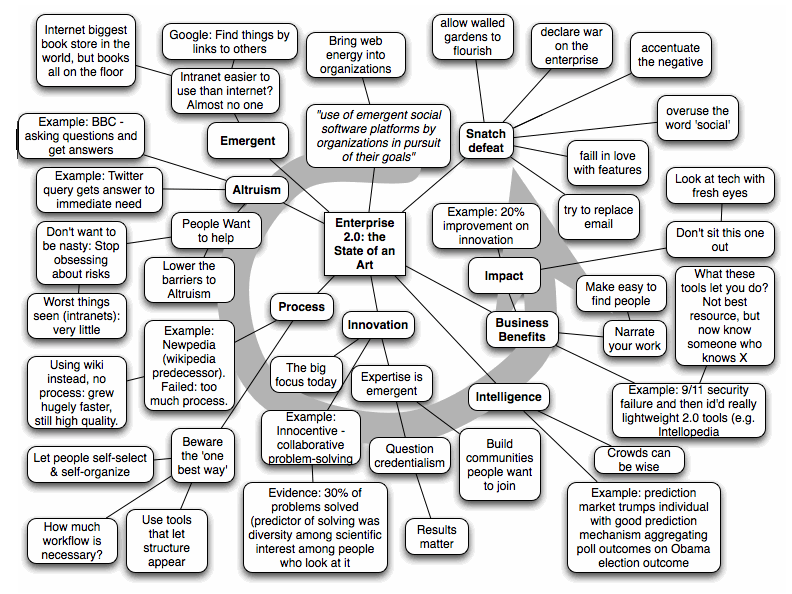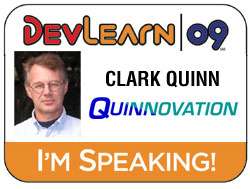Andy McAfee gave us a lively and informative presentation on his view of Enterprise 2.0. Punctuated by insightful examples, he defined Enterprise 2.0 as “”use of emergent social software platforms by organizations in pursuit of their goals”, and characterized it more simply as ‘bringing web energy into organizations’.
Along the way, he emphasized points about emergent behavior, inherent altruism, emergent process, developing innovation, the intelligence of crowds, and real business benefits. A 20% improvement in innovation was one concrete result. He also warned us of the ways to snatch victory from the jaws of defeat.
BTW, Cammy Bean’s has posted a prose recitation of the talk. With no further ado:



 Based on the principles from our CLO
Based on the principles from our CLO